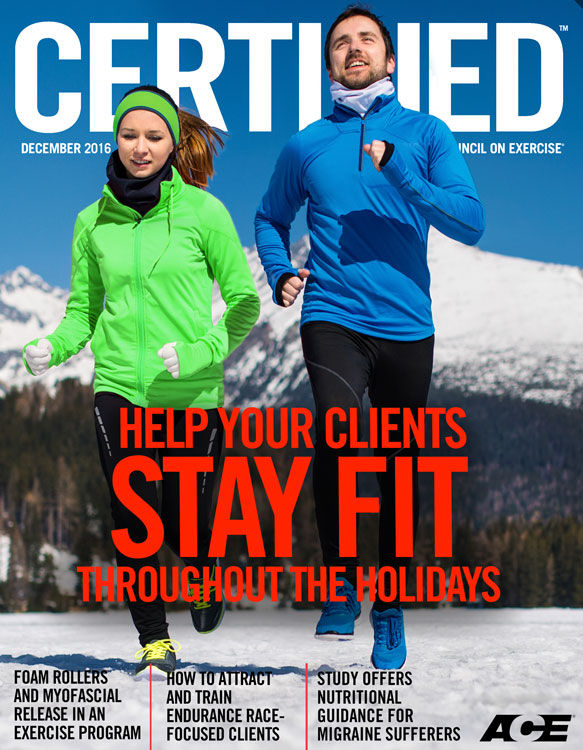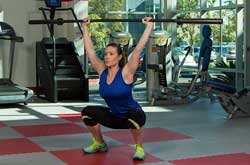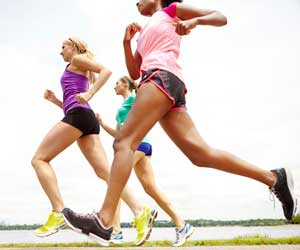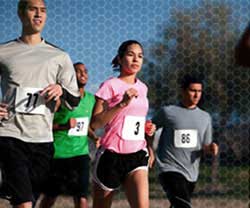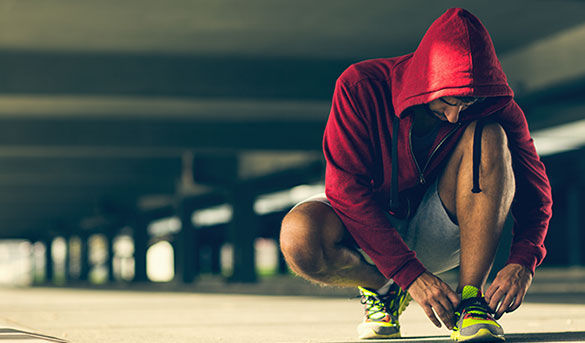
In the summer of 2015, I set an ambitious goal: I wanted to run the Marine Corps Marathon and win my age group.
The 26.2-mile race, run in and around Washington, D.C., has been held for 40 years, and is the fifth largest marathon in the United States. At the time I decided to run it, I had already completed 28 marathons, so I was hardly a novice. But for once, I decided it might be better to have someone else guiding my training and planning my workouts. Maybe that would give me the edge I needed.
The first person I contacted? Not my long-time personal trainer.
He was the second call.
I went online and found a certified running coach—in, of all places, Switzerland. Gabriel Lombriser, part of a group called runningCOACH (www.runningCOACH.me), has a degree in sports science, and a tremendous background as a triathlete, marathon runner and coach. Among the initial questions he asked me on Skype was whether I did any strength training—widely acknowledged as important for endurance athletes, particularly older ones like me.
I told him that I had been working with a personal trainer for years.
“That’s good!” he said. “Keep it up!”
“I said, ‘smart guy,’” laughs my trainer Bob Phillips, when I now ask him about that. Bob is built more like a defensive lineman than a distance runner, but he has supervised my gym training while I was preparing for many of my marathons and other races.
Bob stayed abreast of my progress during my three-month marathon build-up and trained me accordingly.
“It probably wasn’t the best time to be doing max lifting for the legs,” says Bob, dryly. “I scaled back on movements that would tax the joints and tendons. We did a little more stretching during the sessions.”
My running coach was happy to know that I was in professional hands as far as that aspect of my preparation. “It’s not so common in Europe for a runner to also have a personal trainer,” Gabriel said. “So I thought it was great that you had Bob. It was one less thing for me to have to worry about.”
Conversely, Bob knew that with the long training runs, hill repeats and sustained, faster efforts that Gabriel was having me do, strength training efforts had to be carefully measured. On days that I worked out alone, I followed a basic regimen he had laid out for me, which emphasized a lot of body-weight exercises.

Race day was October 25. I knew from previous performances that if I could run about 3 hours, 18 minutes, I would have a good shot at winning the men’s 60-64 year old age group at Marine Corps (race awards are given to the top male and female finishers in five-year age groups from 14 to 80). When I lined up at the start in Arlington, Va., along with 25,000 other runners, I took mental inventory of my body: my core, my quads and hamstrings, my shoulders and back—all felt strong and ready to withstand a three hour-plus effort.
The work of my two fitness pros—personal coach and personal trainer—coalesced beautifully. I crossed the finish line, near the U.S. Marine Corps War Memorial (also known as the Iwo Jima Memorial), in a time of 3 hours, 16 minutes, 23 seconds—an average of 7 minutes, 29 seconds per mile. Within a few minutes, a friend of mine—who had been following my race online back in New York—texted me the news that I had won my age group by several minutes! I finished first out of 428 men, age 60-64.
To put that in perspective, I was the 437th finisher in the race that day, over an hour behind the overall winner. But it’s all relative in running. I was really happy with the result—and I wasn’t the only one.
“Obviously, you ran the race, and your coach planned the training, but I felt like I contributed,” says Bob. “This is a people business. So when one of your people does something that means a lot to them, yeah, it’s a satisfying experience.”
Winning my age group at a major national marathon was a highlight of my 30 years as a competitive runner. But I’m certainly not the only one with long-distance dreams. The number of marathon finishers in this country continues to climb—to 550,000 last year, according to USA Running, which tracks trends in the sport. Meanwhile, the 13.1-mile half-marathon is experiencing double-digit growth (2,046,600 went the distance). Moreover, the percentage of women participating has climbed to record levels (more than half the finishers in many races).
What these numbers represent is an opportunity for health and fitness professionals to help guide the rapidly growing number of race participants to successful finishes. Here are some tips on how to do that, and to expand your clientele in the long run:
Assess Yourself as You Would a Client
A client comes to you and says, “I’d like to run a marathon. Can you help me?” Your response should be:
- “Sure, even though I think runners are pencil-necks and I get winded jogging from the weight room to the water fountain.”
- “Sorry, not my area of expertise. Call me when you’re ready to max out on the bench press or get in shape for swimsuit season.”
- “What a great goal! Let me get back to you and then we can discuss it in depth.”
Of course, “c” is the correct answer.
“I think the first thing you need to do is evaluate your own skills as a trainer,” says Colorado-based author and coach Gale Bernhardt. “Do I know anything about the marathon? Have I ever taken additional continuing education credits in this area, and do I know anything about endurance sports?”
If the answer is “no,” that’s not necessarily a reason to abandon the project. “Be honest with the client,” Bernhardt says. “But there are lots of ways in which you can still help that person.”
Become Your Client’s Connection
You might not know how to train for a marathon, but chances are you do know how to find information related to health and fitness. So maybe it’s your role to help steer your client to the right source, perhaps to a running coach—if so, a good way to find a competent one is through the Road Runners Clubs of America (RRCA), which offers a well-recognized coaching certification program for distance runners.
There are also many good books and online plans on how to run a marathon (those by long-time coach-authors Hal Higdon and Jeff Galloway are among the tried and true, especially for first-timers). There are many experienced runners who, although not coaches, can offer sound, practical advice, and there are running clubs in your area, which probably offer organized group training runs (the RRCA website is a good way to find clubs, as well).
All of this can aid your client. You can help not by being the expert, but by being the conduit to other experts, resources and solid advice—as well as their strength training, of course.
Don’t Have the Experience? Get Some!
“What better way to help client run a marathon or a half-marathon than by running one yourself?” says Robert Morea. “That’s what I did. I was a lifter who then became a runner.”
As a young man, Morea was a competitive bodybuilder, winning a Junior Mr. Delaware title while in college in 1988. He entered the personal-training field right after graduation, working at a one-on-one gym in Manhattan. “I met a lot of clients who were running marathons,” recalls Morea. “It got me interested. I thought it would be something good to add to my resume.”
He began doing short-distance triathlons, enjoyed them, and ran his first marathon in 1996. He went on to complete six more marathons and two Ironman distance triathlons. While he still runs, his main professional focus now is on his own NYC fitness studio, Great Jones Fitness, where he regularly works with runners. “And when they tell me about how tough a particular running workout was, I know exactly what they’re talking about!” he says.
Network With the Local Running Community
Most runners today know the importance of strength training, but many aren’t sure of the right way to go about it. That’s where you come in. But how do you get on the local runner radar?
“Contact the running apparel store in your area, or the local running club,” says Lewis Bauer, a personal trainer and former chiropractor. Those aforementioned running clubs typically have monthly meetings. “Maybe you can offer to come speak at a club meeting about the importance of strength training for runners.”
Other ways to raise your profile in the local running community: “Get involved with the racing scene,” says Bauer, another trainer who is also a runner and triathlete. “It doesn’t have to be running a marathon or doing a long-distance triathlon.”
You can stick your toe into the running waters by doing a 5K (3.1 miles). Or you can volunteer at a local race, where another pair of helping hands is always needed. “You can help hand out water, or volunteer at the finish line,” explains Bauer, who lives in Port St. Lucie, Fla. Most races have music, food and raffles after the running is done. “That’s a great place to get out and meet people,” says Bauer.
At these races, come prepared to help, motivate and network. After you’ve lifted their spirits as a volunteer cheering them on as they run, you can tell them about how lifting might help their running—as it did mine.





 by
by 